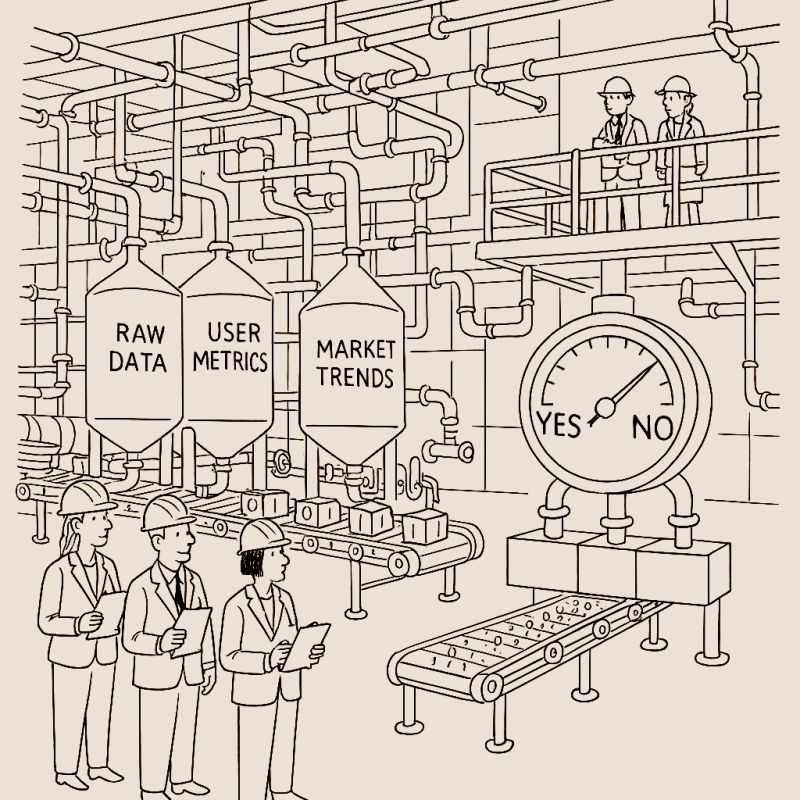In a world drowning in metrics, the crucial skill is synthesizing them into decisions—knowing which numbers to trust, ignore, and compress.
Data enhances decisions but can't provide the final verdict. Raw numbers offer candor without counsel: they can't resolve trade-offs or absorb context. Dashboards illuminate, but judgment decides where to step.
Effective operators gather data widely, then curate ruthlessly. Successful e-commerce platforms sift billions of clicks to surface only what matters to you right at the moment. Product leaders prototype, then cut—the countless unseen iterations explain the simplicity in your hand. The best search engines index billions of pages, but deliver the one useful answer in milliseconds.
Value comes from first accumulating data, but then reducing it to essentials. This compression distills signal from noise and presents clear options. Strong leaders demand this synthesis.
This requires distinguishing honest inquiry from decision avoidance. Usually, precision has diminishing returns and extra decimals rarely change outcomes—yet, wisdom also lies in recognizing when one more crucial piece of data, one more targeted experiment, is essential before committing.
The effective approach follows a clear rhythm:
1️⃣ Frame the question precisely—sharp prompts prevent analytical sprawl.
2️⃣ Collect just enough data to define stakes—seeking boundaries, not omniscience.
3️⃣ Compress insights into a narrative with a clear stance and clear options—stories outlast spreadsheets.
4️⃣ Decide while opportunity is ripe—delay compounds relentlessly.
Server space is cheap. Time, talent, and trust are invaluable. Successful organizations treat data as an advisor: listened to carefully and taken seriously, but guided by human clarity on priorities.
The paradox: our data-saturated age demands more expert judgment, not less. In the noise, humans must unearth the signal.
